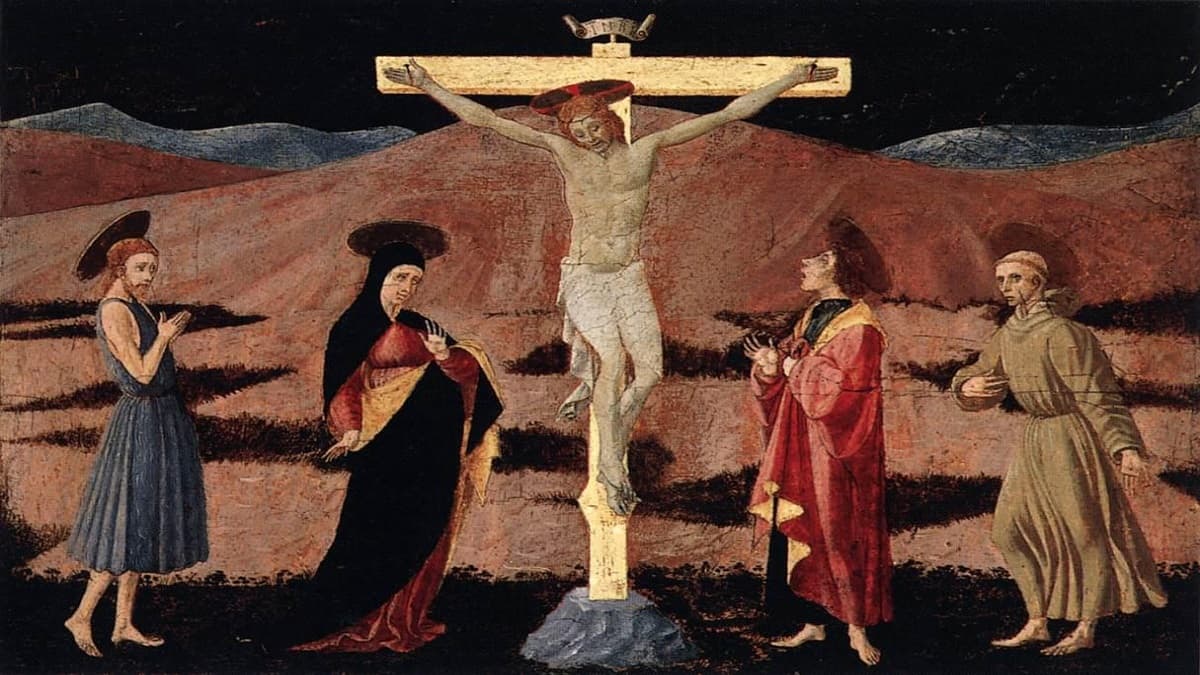Easter is the most important Christian festival, being the one with the highest degree of solemnity. It celebrates the resurrection of Jesus Christ, which happened on the third day after his crucifixion.
The date Easter falls upon, unlike that of Christmas, for example, varies from year to year.
Easter in the Christian religion has similarities with both the Jewish Passover and with some ancient pagan festivals.
Easter at Saint Peter’s
Particular celebrations are held in Saint Peter’s Basilica, not just on Easter Sunday but also during the Holy Week, which starts the previous Sunday, known as Palm Sunday.
The Celebration of the Passion of the Lord takes place on Good Friday afternoon, while in the evening the ritual of the Way of the Cross departs from the Colosseum.
The Way of the Cross commemorates the path of Christ led to the crucifixion on Golgotha or Calvary; it is a route made up of 14 stations, at the end of which the Pope gives the Apostolic Blessing to the faithful.
While participation in the Way of the Cross is open to all, a ticket is needed to take part in Holy Mass on Easter Sunday. The tickets are free of charge and can be requested by writing to the Prefecture of the Pontifical House
At the end of Easter Mass, the Pope performs the “Urbi et Orbi” blessing: “of the City of Rome and of the whole world," invoking the remission of sins for all those present.
What is the Meaning of the Word Easter?
The word Easter (in Italian Pasqua) derives from the Greek term pascha, which in turn derives from the Aramaic word paskha. The meaning in both cases is that of "passing" or ‘passing over'.
For Christians, Easter is the passage of Christ from death to life and the consequent passage of man from sin to salvation.
Jewish Passover, pesah or pesach, remembers the passage of the Jews escaping from Egypt across the Red Sea.
The English word Easter derives from the pagan goddess Ēostre and the farming festivals held for the rebirth of spring, known as Ostara.
How is the Exact Date of Easter Calculated?
The date of Easter depends on the lunar cycles. The Catholic and Protestant churches celebrate it on the Sunday following the spring full moon; this day can fall between the 22nd of March and the 25th of April.
This system of dating was adopted by the First Council of Nicaea in 325 A.D.
However, the orthodox churches celebrate Passover between the 4th of April and the 8th of May, corresponding to the Sunday following the first spring new moon.
The History of Easter
The Jewish Pesach was born as an agricultural festivity, modeled on those celebrated by other peoples of the Near East. Later, it was made to coincide with the celebration of the exodus of the Jews from Egypt.
There is a strong link between Christian Easter and Pesach.
The gospels tell us that Jesus died the day before the Jewish festivity, which fell on a Saturday in that year. The resurrection, however, happened on the day following Pesach, and therefore it became the Day of the Lord (dies dominica in Latin).
The first Christians, up until the second century, celebrated Easter in correspondence with Pesach. This was in order to remember the sacrifice that Christ had made in order to save man from original sin. Only later did they prefer to celebrate the resurrection: the formalization of the movement of the date to the Sunday following the first spring full moon occurred at the Council of Nicaea.
The Eggs, the Lamb and the Easter Rabbit
Many elements that characterize the Easter celebrations originate in Jewish and pagan traditions.
The egg has always been a symbol for the origin of life. In ancient times, it was connected to the cult of the Great Mother and other female divinities. The goddess Eurynome, for example, transformed into a dove and laid an egg. Then she ordered the serpent Ophione to coil around it. After it had been coiled around seven times, the egg opened, and all things that exist were hatched.
In the 20th century, the use of chocolate eggs spread widely, the prototypes of which first appeared in the 1700s in France at the court of the Sun King. To celebrate Pesach, the Jews eat lamb meat. In this way, they remember when their ancestors marked the doors of their homes with lamb blood so that the angel of God could distinguish them from the Egyptians. That night, in fact, the angel killed the firstborn of all men and animals, except those of the houses marked with the blood. Much like the enduring beauty of the Rome Pantheon, these traditions connect past and present in significant ways.
The rabbit and the hare have always represented fertility, due to the fact that they can both reproduce quickly.
The goddess Ēostre, from which we get the English word Easter, was often represented with the head of hare.
The first to use the hare as an emblem of the Resurrection of Jesus was Saint Ambrose in the 4th century; the hare’s mantle, which changes color with the alternating of the seasons, was associated with the concept of new life.
The rabbit became a symbol of Easter much later, towards the 16th century, in Germany. The Easter Bunny and preparing cakes in the form of a rabbit are customs mainly used in German-speaking countries and the United States.

Vox City, The Vox Group's Dedicated Business-To-Consumer Arm For The Past Five Years, Is Staffed By Veteran Travel Industry Experts With A Combined 21 Years Of Expertise In The Tourism Industry. Let's Explore The Beauty Of Travel In Your Own Way At Your Own Pace.
Vox City International 63 Holly Walk | CV32 4JG Leamington Spa
2025 Vox City, All rights reserved.





